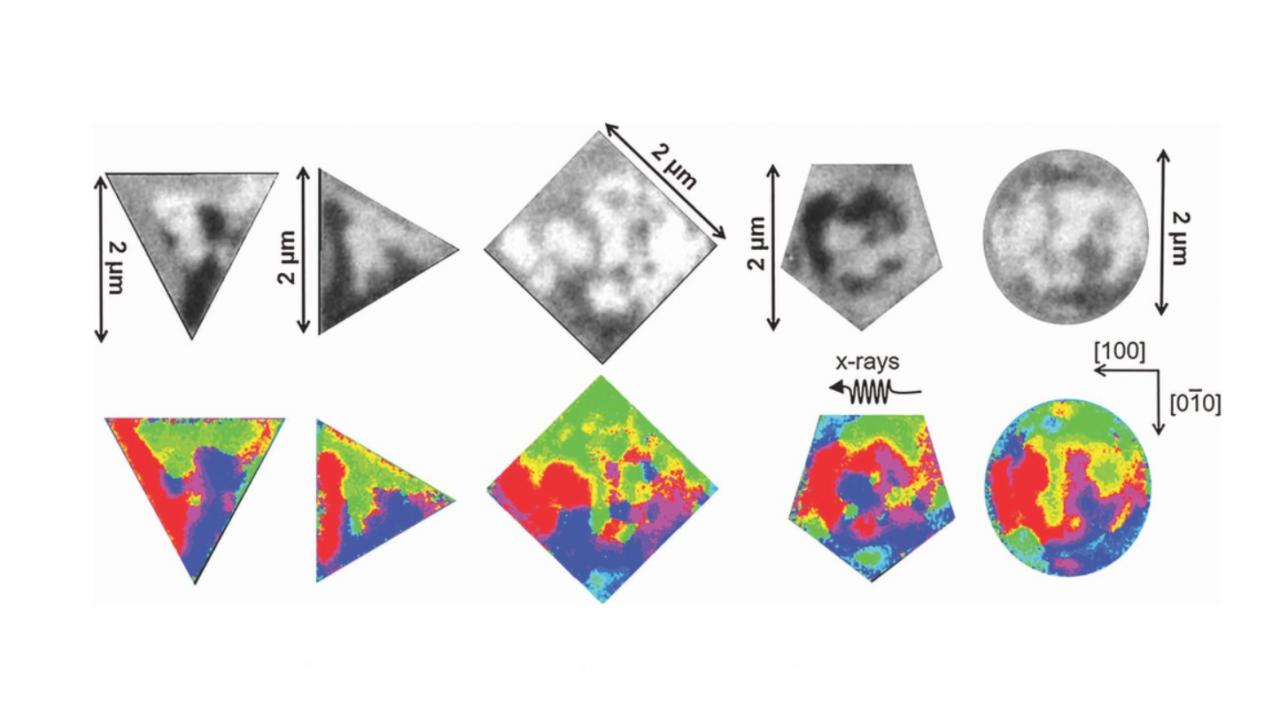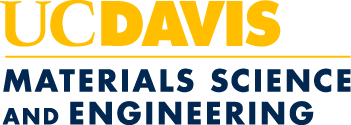
Using “fun physics” to advance computing
Driven by the thrill of discovery, materials science and engineering professor Yayoi Takamura’s research group explores the “fun physics” of the magnetic and electronic properties of thin films of complex oxide materials to better understand how these materials that can be used in advanced computing.
In one project, the group has been looking at heterostructures of La₀.₇Sr₀.₃CoO₃ (LSCO) and La₀.₇Sr₀.₃MnO₃ (LSMO). LSCO is a hard ferromagnet, which means it requires a large magnetic field to switch its magnetization between up and down states, while LSMO is soft, meaning it’s easy to change the direction of its magnetization.
They’re interested in what happens at the interface between these materials when a thin film of one is grown on top of the other. So far, the group has found that growing a layer of LSCO on top of LSMO forms an interface with unique magnetic properties.
“We grow two layers and we end up magnetically with three layers,” explained Takamura. “The LSMO and interface couple together to form a soft layer and the remaining LSCO ends up being the hard layer. In other words, the chemical interface and the magnetic interface are not at the same place any more.”
While there have been similar studies on metallic materials, not much is known about if and how complex oxides behave differently. The goal is to understand their behavior and create theoretical models that will allow researchers to predict which combinations or structures of materials will produce the properties they’re looking for.
This is important for building neuromorphic computers, a type of advanced, ultra energy-efficient computer modeled after the brain. Complex oxides like LSCO and LSMO have a potential to form the building blocks of the controllable and efficient circuits required for the technology. She plans to continue exploring these complex oxide materials with her group as they work toward finding the materials to build the next generation of computers. This work is part of a larger effort funded through a Department of Energy – Energy Frontier Research Center, “Quantum Materials for Energy Efficient Neuromorphic Computing.”
Some of the group's other work focuses on the antiferromagnetic properties of La₀.₇Sr₀.₃FeO₃ (LSFO) and heterostructures with LSFO and LSMO. Antiferromagnetic materials have net zero magnetization, which makes it harder to study their magnetic properties, but theoretically makes them faster, more stable and more efficient for spintronic devices—ultra-efficient computer circuits that use electron spin in addition to electron charge, which is used for the basis of current electronic devices.
Her team plans to explore spin transport in these types of heterostructures through a new collaborative grant with the University of Denver, and a recent paper from the group in this area was selected as a feature article and cover for in the Journal of Applied Physics.
Takamura’s research has invited a long list of collaborators and taken the group across the country to different national laboratories to characterize their materials. She has done research at SLAC National Accelerator Laboratory, Lawrence Berkeley National Laboratory, Oak Ridge National Laboratory and Pacific Northwest National Laboratory and collaborated with experts at the Twente University, Norwegian University of Science and Technology, the University of Chicago and Purdue University, as well as at several other UC’s.
At the end of the day, she simply enjoys exploring these materials and how they behave. For example, growing LSCO on top of LSMO produced a different result than the other way around.
“There are lots of little things we think shouldn’t affect the material or only have a small effect that end up having a really big effect, and all of a sudden we have these new effects that can be amplified,” she said. “It’s weird and interesting.”
